World Hockey Association (1972-1976)
Tombstone
Born: November 1, 1971 – WHA founding franchise11975-76 World Hockey Association Media Guide
Moved: August 9, 1976 (Minnesota Fighting Saints)
First Game: October 11, 1972 (W 2-0 vs. Quebec Nordiques)
Last Game: April 11, 1976 (L 3-2 vs. New England Whalers)
AVCO Cup Championships: None
Arenas
1972-1974: Cleveland Arena
1974-1976: The Richfield Coliseum (19,861)21975-76 World Hockey Association Media Guide
Marketing
Team Colors: Purple, Black & White31975-76 World Hockey Association Media Guide
Ownership
- 1972-1975: Nick Mileti
- 1975-1976: Jay Moore
- 1976: Nick Mileti
Our Favorite Gear
Cleveland Crusaders
Replica Jersey
When it comes to Replica Jerseys, we turn to our friends at Royal Retros, who put extraordinary detail into their fully customizable hockey sweaters.
Free Customization Included
Each jersey individually handmade
Any name and number
Sewn tackle twill crest, numbers & letters
100% polyester
Heavyweight fabric made to game standards
Fight strap included
When you make a purchase through an affiliate link like this one, Fun While It Lasted earns a commission at no additional cost to you. Thanks for your support!
Background
The Cleveland Crusaders were one of twelve original franchises in the World Hockey Association in the winter of 1972-73. The franchise originally intended to play in Calgary. But after hitting a dead end in Alberta, the club ended up in the hands of Nick Mileti, the owner of the NBA’s Cleveland Cavaliers and the Cleveland Indians. Mileti was also the former owner of Cleveland’s previous hockey team, the Cleveland Barons of the minor league American Hockey League, and he owned the downtown Cleveland Arena that the Barons and the Cavs called home.
Like the American Football League and the American Basketball Association before it, the WHA was formed with the intention of challenging the establishment league (in this case the NHL) for the best markets and the best talent. The WHA truly got on the map when the Winnipeg Jets signed Bobby Hull away from the Chicago Blackhawks for $1 million. The Philadelphia Blazers lured away Boston Bruins star Derek Sanderson with a deal that briefly made Turk the highest paid athlete on Earth.
Gerry Cheevers Signing
The Crusaders also landed one of the biggest stars in the new WHA, signing away goaltender Gerry Cheevers from the Boston Bruins with a seven-year contract that paid $200,000 per season. One of the top goaltenders on the planet at the time, Cheevers earned two Stanley Cups in Boston and established an NHL record 32-game unbeaten streak in net during the 1971-72 season.
The Crusaders storyline was a tough, defensive minded club that played well in the regular season and then folded in the playoffs. The Crusaders made the playoffs in all four of their WHA seasons, but never advanced beyond the second round.
Into The Richfield Coliseum
The team played its first two seasons at the Cleveland Arena while owner Nick Mileti worked on development of the 18,500-seat suburban Richfield Coliseum. The Crusaders finally moved into the Coliseum in November 1975. But the new arena required a long drive out into the farmlands between Cleveland and Akron. Crusaders attendance ticked up only marginally from the team’s days in the big old barn downtown. Crowds averaged between 5,200 and 7,000 for all four seasons of the club’s existence.
After the team’s third season (and first in Richfield), Nick Mileti sold controlling interest in the team to one of his partners, Jay Moore. Moore presided over a contentious fourth and final season of Crusaders hockey in the winter of 1975-76. In January 1976, Crusaders GM Jack Vivian publicly criticized Cheevers, accusing the All-Star of not providing “major league goaltending” to the club. Cheevers, fed up with Vivian, prepared a retirement statement, while the GM slapped a fine and an indefinite suspension on the goalie. A week later, attorneys for both sides agreed to void Cheevers contract and he left the WHA to return to the Boston Bruins.
Two weeks later, Vivian and owner Jay Moore incensed the remaining Crusaders players by traveling to Kansas City, Missouri, allegedly to pitch the NHL’s troubled Kansas City Scouts franchise on relocating to Cleveland. The players viewed this as a betrayal of the team and a dereliction of management’s duty to stay in Cleveland promoting the team they had. On March 10, 1976, the Crusaders took the ice at the Richfield Coliseum wearing black armbands to protest the actions of team management. Vivian resigned the next day, realizing he had lost control of the club.
Attempted Moves to Florida, Minnesota
After the Cruaders’s annual rite of spring – an early playoff exit – Jay Moore attempted to sell the Crusaders to former World Football League owner Bill Putnam, who planned to move the team to Hollywood, Florida and call them the Florida Breakers. The deal fell through and Mileti ended up stepping back in to take the team back from Moore. Meanwhile, the NHL was relocating to Cleveland after all. It wasn’t the Kansas City Scouts, but rather another troubled club – the California Golden Seals. With the NHL coming to town, Mileti realized the Crusaders’ days were numbered in Cleveland.
The WHA granted approval to move the team to St. Paul, Minnesota on August 9, 1976. The Crusaders became the second edition of the Minnesota Fighting Saints, replacing an original WHA franchise that ran out of money and folded during the season in February 1976. Mileti was never a big money guy in any of his sports dealings – he put deals together with loans and other people’s money. In St. Paul, Mileti could not find local investors to buy into the club and as a result the “New Fighting Saints” ran out of funds after just a few months play in January 1977. Minnesota’s WHA franchise folded in mid-season for the second year in a row and that was the end of the franchise that began life as the Cleveland Crusaders in 1972.
Cleveland Crusaders Shop
Crusaders Logo T
Available Now at 503 Sports
Editor's Pick
The Rebel League
The Short and Unruly Life of the World Hockey Association
By Ed Willes
The Rebel League celebrates the good, the bad, and the ugly of the fabled WHA. It is filled with hilarious anecdotes, behind the scenes dealing, and simply great hockey. The upstart WHA introduced to the world 27 new hockey franchises, a trail of bounced cheques, fractious lawsuits, and folded teams. It introduced the crackpots, goons, and crazies that are so well remembered as the league’s bizarre legacy.
But the hit-and-miss league was much more than a travelling circus of the weird and wonderful. It was the vanguard that drove hockey into the modern age. It ended the NHL’s monopoly, freed players from the reserve clause, ushered in the 18-year-old draft, moved the game into the Sun Belt, and put European players on the ice in numbers previously unimagined..
When you make a purchase through an affiliate link like this one, Fun While It Lasted earns a commission at no additional cost to you. Thanks for your support!
In Memoriam
Former Crusaders center Bob Dillabough (Crusaders ’72-’73) died on March 27, 1997. We was 55 years old.
Links
###

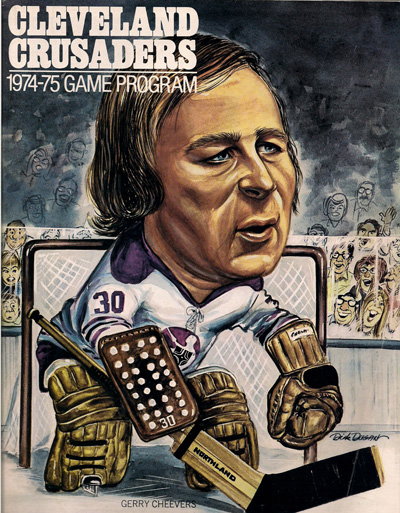
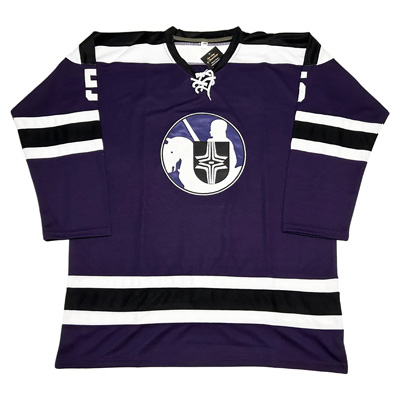
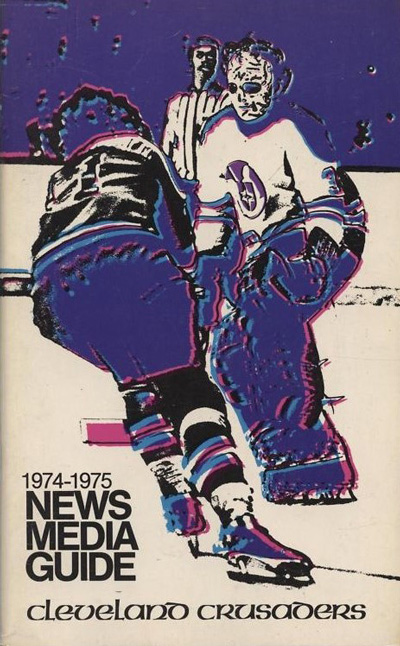
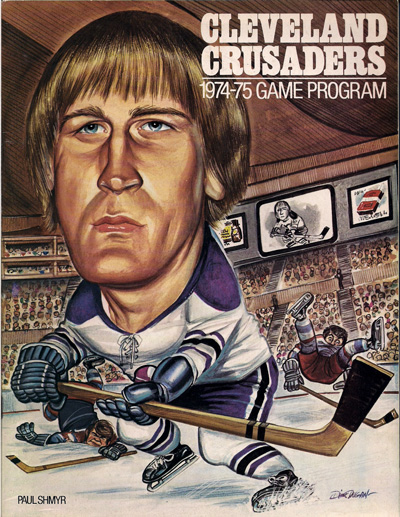
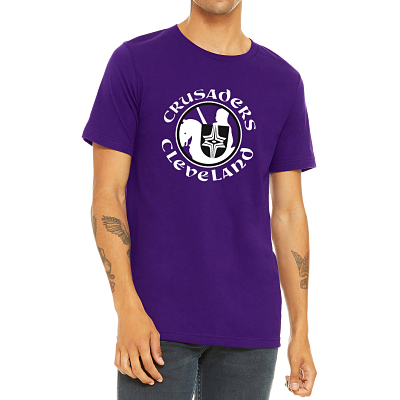

One Response
Good write up of the franchise, especially the Florida Breakers fiasco. Almost 20 years ago, I past by the Richfield Coliseum and was amazed by how “in the middle of nowhere” it was even at that time. The new Saints never had a chance plus an identity crisis and folded up also instantly (whereas the demise of original Saint was more drawn out)